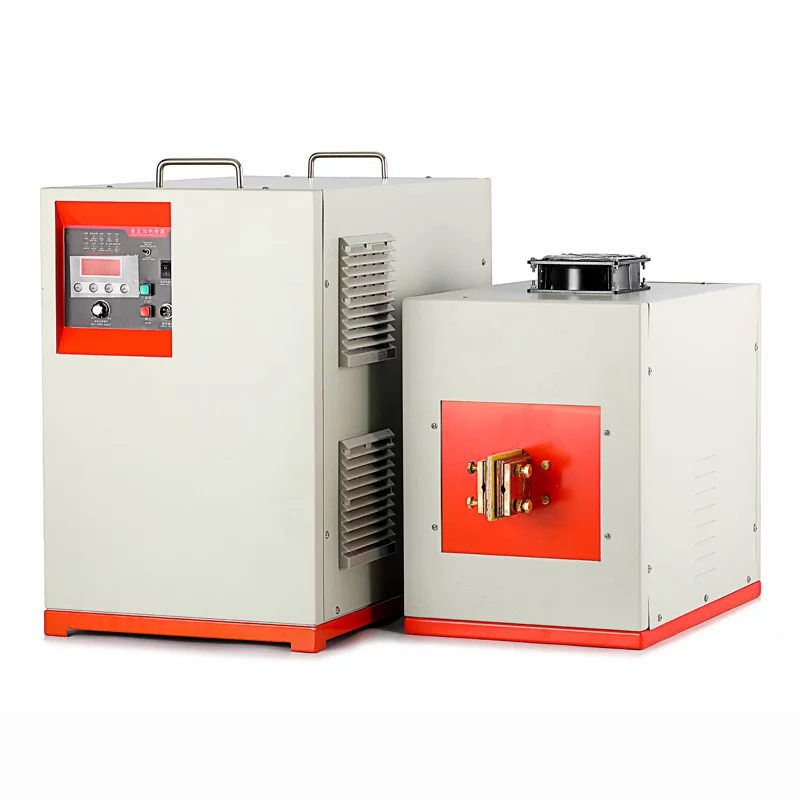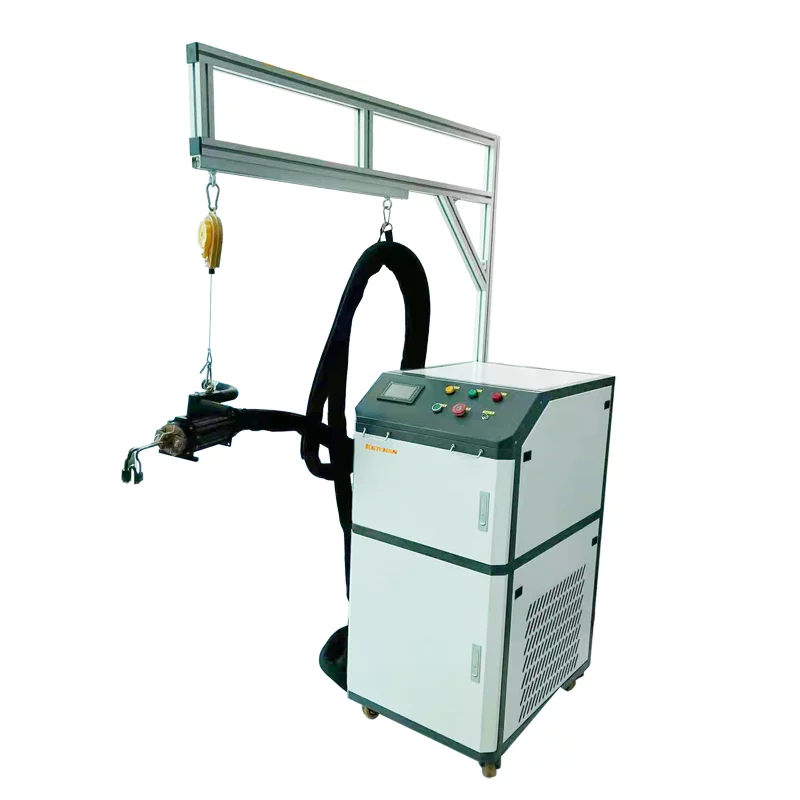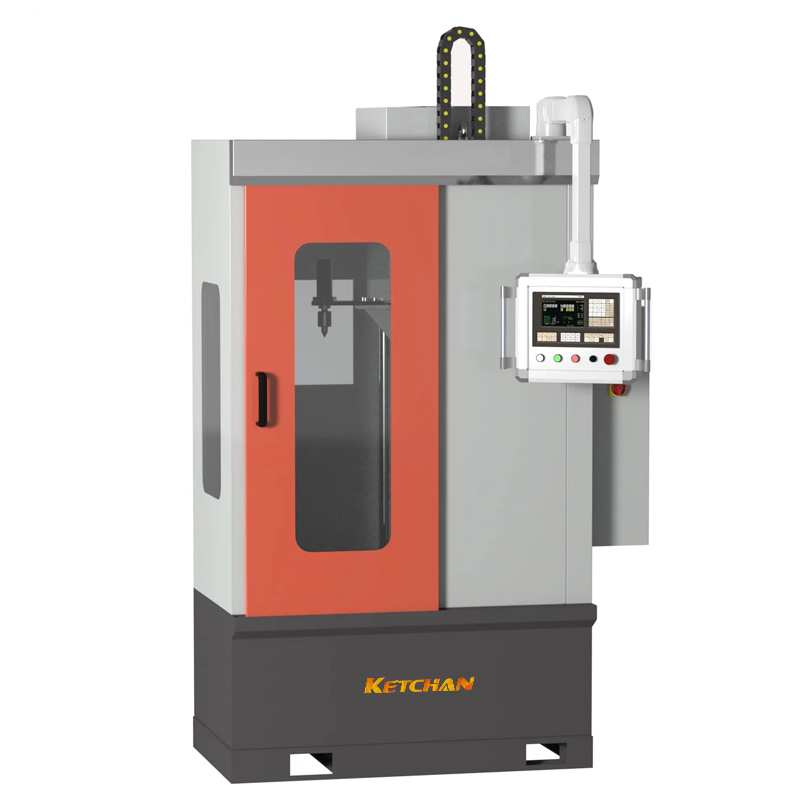1. Metallic problems of induction quenching
(1) The critical point of rapid heating increases
The heating rate of induction heating is from tens of degrees per second to several hundred degrees. The pulse quenching can reach thousands of degrees per second, and the laser quenching can reach tens of thousands of degrees. Due to the fast heating speed and short duration, the quenching temperature is higher than the salt bath quenching, so that the microstructure can be changed into austenite. For carbon steel and low alloy steel, the quenching temperature of induction is increased by 80~150℃ compared with the conventional, but the quenching temperature of high-speed steel is not increased by so much and is usually only increased by 20~40℃.
The specific power of induction heating is much larger than that of in-furnace heating, so the heating speed is extremely fast, which causes the temperature increase of pearlite to austenite to start and complete in a short time. When rapid heating is applied, the critical point (Ac3) of steel also increases with the increase of heating temperature.
(2) Rapid heating makes the steel obtain fine grain or ultra-fine grain
In the range of low heating rate, the austenitic initial grains formed by the newly completed austenitizing decreased significantly with the increase of heating rate, but at the high heating rate, the austenitic initial grains almost stopped decreasing with the increase of heating rate. It has been proved in practice that the heating rate is very high and the initial grains obtained are very small and independent of the heating rate under induction heating conditions. However, the growth of the formed austenite grains is related to the heating rate. When heating to a certain temperature, the slower the heating speed is, the larger the actual austenite grains formed will be. Therefore, as long as the heating temperature and heating time are properly controlled, induction heating will not produce overheating.
According to Hall Peitz’s formula, the finer the grain, the stronger the steel. The fine grains obtained by induction heating contribute to the improvement of tool strength and life.
2. Application of induction heating quenching in HSS mechanical blades
High-speed steel hardenability is very good, in the air can also be quenched fire, so-called “wind steel”, its hardening or air quenching can also be quenched to 64HRC above the high hardness, grinding out a very sharp edge, so also known as “front steel”.High-speed steel induction hardening is self-cooling hardening, energy-saving, and environmental protection, high production efficiency.
In any case, two basic conditions are required: first, it must be austenitized, and second, it must be cooled immediately and at a rate greater than the critical cooling rate of the steel. The characteristics of the induction heating are only the surface is heated, if the surface after austenitizing immediately stop heating, and adjacent to the heated metal layer can be quickly heated thermal conductivity, and the cooling speed is greater than the critical cooling rate, the surface is hardened, it is not on the surface spray quenching liquid cold quickly, but by the internal cold metal to cool, this special quenching process only under high energy density heating can be achieved. Induction heating is one of the heating methods of high energy density. As the power density is very large and the heating time is very short, it is also called pulse heating.
During induction heating, the heat generated by the eddy current on the workpiece is mainly used in the heated surface layer. In this process, two kinds of heat are emitted from the workpiece at the same time. The first kind of heat is emitted from the heated surface into the air, which is called radiant heat. The second kind of conduction from the workpiece heating layer to the center is called conduction heat. These two heat losses, especially the effect of internal heat conduction, deepen the theoretical thermosphere depth. If the workpiece is not too thick, the heat transfer quickly passes from the surface to the heart, and the whole section is heated through. High-speed steel is a self-hardening material, which can quench fire immediately after heating. This is a special function that other steels cannot have.
The measurement of the induction heating temperature can be made by infrared photoelectricity pyrometer or optical pyrometer, or by visual measurement (according to the color of the heating workpiece) to determine the heating temperature.
Anhui Jialong Front steel tool from 2014, the application of high-frequency induction heating technology, try quenching thickness ≤6mm M2 steel blade, put on the market, the customer report is very durable, its service life than in the protection of the atmosphere furnace quench more than 1 times, enhanced our confidence to expand the market. In order to meet the increasing market demand for the thick blade, in 2015, we introduced super audio (20~100Hz) and a self-made quenching machine, which can quench blades with a thickness of 8~16mm. Figure 1 is a complete set of quenching equipment.
FIG. 1 Quenching device
FIG. 2 shows the metallographic structure of the blade with a size of 2600mm×75mm×12mmM2 after quenching.
Figure 3 shows the hardness distribution on the side and end face after quenching. In Figure 3A, the hardness distribution on the side is 3HRC at point 1, 60.5 HRC at point 2, and 64.5HRC at point 3. In figure 3B, the hardness distribution on the end face is 64.5HRC at point 1, 62 HRC at point 2 and 60 HRC at point 3.Figure 4 shows the metallurgical phase after tempering.
FIG. 3 Hardness distribution of M2 steel blade by induction heating
FIG. 4: Tempering metallography
The measured effective depth of the hardening layer is 5.5~6.0mm, and its hardness decreases from the surface inward: 64.5 HRC→62 HRC→60HRC. The surface is hard and the heart is soft. The working face of the mechanical blade is always on the surface, which is the ideal hardness distribution. According to the market investigation, the blade is still worn out, indicating that there is still room for improvement in hardness, but it is very limited. If the blade is not properly made, it may collapse. Please be careful.
3. Quality inspection of induction quenching blades
After the quenching process is completed, the induction quenching workpiece is generally inspected as follows:
(1) Appearance inspection
The workpiece surface shall not have any macroscopic defects such as melting, crack, collision, etc. After normal quenching, the surface is rice white sandwiched with black, and there will be some differences with different steel Numbers. Experienced operators can judge the quenching heating temperature according to the surface color. In the case of local melting and obvious cracks, caving, and Angle dropping, it can be found in the appearance inspection. General induction quenching parts, the inspection rate of 100%.
(2) Hardness inspection
Experienced examiners can apply standard file files to contact edges and quench belts. Shaw or portable Rockwell hardness tester or more advanced and more accurate hardness tester can be used on site.
(3) Metallographic examination
Hardness is only a superficial phenomenon, metallographic structure is the essential thing. The metallographic examination may be performed by sampling the workpiece or at any hardened site (imported metallographic apparatus). Grain size must not be greater than 10 grades. For other parameters, please refer to the JB/ T9204-2008 Induction Hardening Metallographic Examination of Steel Parts.
(4) Check the hardening area
Whether after quenching or tempering, are measured with a shaw hardness tester. The hardening area is demarcated according to the tool width and customer requirements.
(5) Depth test of the hardening layer
At present, the depth of the hardening layer is mostly used to cut the specified position of the quenching workpiece to measure the depth of the hardening layer. Before most of the metallographic measurement, now basically use GB5617 standard, to measure the hardness of the hardened layer section to determine its depth, this method often needs to destroy the workpiece inspection and cause waste, so in addition to the special workpiece needs to deliberately lengthen the workpiece, mostly referring to the height of the surface hardness, estimate the depth of the hardened layer.
(6) Deformation inspection
Although the blade induction heating rarely distorts, it should be checked one by one. If the deformation is found to be out of tolerance, the principle of martensitic superplasticity should be used to correct in time.
(7) Crack inspection
The cracks can be non-destructively detected by magnetic powder or displayed by fluorescent powder. The workpiece detected by magnetic powder should be demagnetized before entering the next process.
4. Conclusion
The induction hardening of high-speed steel once considered difficult is now being commercialized. With the in-depth development of science and technology, the confidence of heat treatment workers to “challenge the impossibility” is improved, and miracles emerge one by one. Induction heating quenching will become the core competitiveness of heat treatment.









